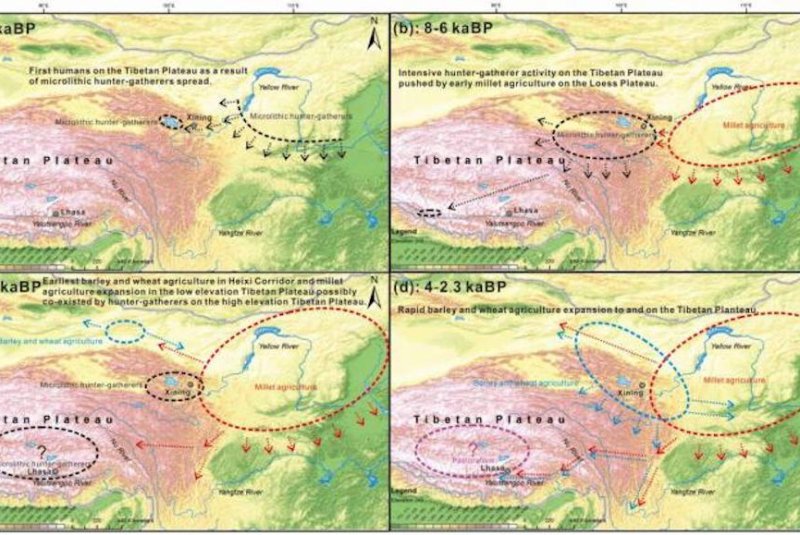A map shows the four-part movement of hunter-gathers and farmers across the Tibetan Plateau between 11,000 and 2,000 years ago. Photo by Science China Press
BEIJING, Aug. 31 (UPI) -- A new study offers an overview of the human history on the Tibetan Plateau.
Long a region of great mystery for scientists, a wealth of new evidence has offered new insights into history of human migration and habitation on the plateau. The study also highlight disagreements among scientists and conflicting hypotheses yielded from the growing body of archaeological, genetic and geological evidence.
"Archaeological research on the plateau during the past few decades has enormously improved our understanding of the topic and makes it possible for us to consider the processes and mechanisms of prehistoric human migration to the region," researchers wrote in the journal Science China Earth Sciences.
In reviewing a number of studies, researchers with the Chinese Natural Science Foundation compiled a timeline of human movements across the plateau. Humans first arrived on the northeastern portion of the plateau, arriving on the low elevations from Western Loess Plateau by way of the He-Huang Valley. From there, settlers began moving southward and toward the plateau's interior.
The movement and evolution of settlers can be divided into four distinct phases, researchers say.
The first humans to inhabit the Northeastern Tibetan Plateau were hunter-gatherers. They arrived between 15,000 and 11,000 years ago. In the wake of the last deglaciation period -- by the early Holocene -- nomadic hunter-gatherers and their relatively advanced stone tools had spread even across the northern portion of the plateau and begun making forays into the interior. Some groups began cultivating millet at lower elevations during this period, between 11,000 and 6,000 years ago.
Between 6,000 and 4,000 years ago, millet farms spread throughout the river valleys of the northeastern and southern parts of the Tibetan Plateau. By the late Holocene, between 4,000 and 2,000 years ago, farmers had begun cultivating wheat and barley at higher elevations.
"Recent studies have not only yielded a large amount of archaeological material and genetic information about the Tibetan people, but they have also proposed divergent hypotheses," scientists wrote in a press release. "A comprehensive analysis of this diverse material, and of the resulting conclusions, is urgently required."















